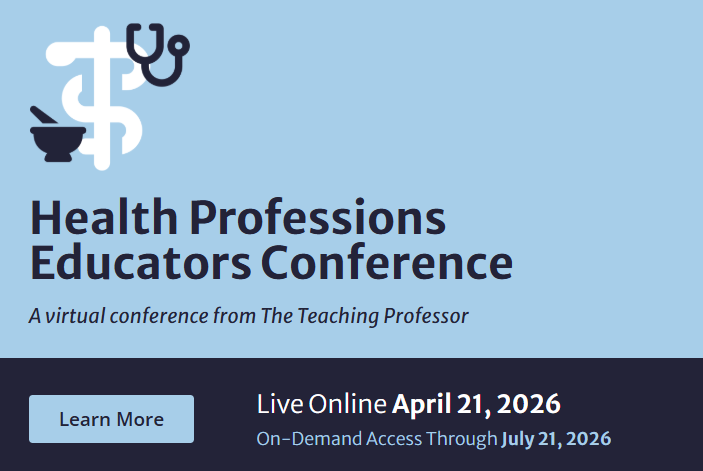As we begin teaching this fall semester, we continue to face unprecedented challenges due to the COVID-19 global pandemic. Many of us have been forced to prepare to teach our classes in several formats, from fully face-to-face to hybrid/hyflex/blended to fully online, with a charge to be flexible so that we can shift the modality of our class without interruption depending on the changing rates of infection in our communities. This comes amid our juggling other responsibilities in our professional and personal lives, including care and school for our children (who also may shift between being at school and being at home), care for family members, managing our own health and anxieties, and more. But while the situation is daunting, we still have the opportunity to teach and guide our students.
One of the positive outcomes of these turbulent times was the release of Lin-Manuel Miranda’s musical Hamilton on the Disney+ streaming platform. For those of us who did not (or could not) see Hamilton live, this was our first real exposure to the energy and inspiration of this musical. After several viewings, we believe Hamilton provides context for recommendations for how we can “rise up” in our teaching from being “helpless” to being “satisfied” during the challenges presented during the COVID-19 pandemic.
Embrace a growth mindset for our teaching
Lin-Manuel Miranda’s vision of Alexander Hamilton portrays an ambitious man who combines his aspirations with a tireless, “non-stop” work ethic to overcome his meager beginnings (Miranda & Kail, 2016). Hamilton capitalizes on the situation presented by a crisis (i.e., the Revolution) by believing in himself and inspiring others with his energy, optimism, and leadership. Despite the danger of the situation, impending hardships, and situational disadvantages, Hamilton believes that he can “rise up” to change his situation, if he invests in changing it. The musical shows that Hamilton makes many mistakes in his journey, but ultimately achieves many of his goals while he is alive, and succeeds in establishing his legacy.
Hamilton embodies the growth mindset that our abilities and performance are not fixed, but can improve with practice and effort (e.g., Dweck, 2008). Similarly, our initial anxiety about our ability to prepare to and actually teach across varying modalities may be terrifying (Saucier & Jones, 2020). We may be tempted to accept that we will provide a poor approximation of our normal teaching product and that we are unable to expand our skillset to handle the challenges of changing teaching modalities. But we do not have to accept this. While we believe we should be kind to ourselves and realistic in what we can offer amid our own professional and personal chaos, we also believe that we should trust our abilities to grow to meet these challenges. Our students may not remember the content we taught them later in their lives, but they will remember our approach to this crisis. The COVID-19 pandemic is intruding on their college experiences and they are making lifelong memories. We have the opportunity to show them energy, optimism, and leadership as we model a growth mindset in teaching them.
Empathize with differing perspectives
A powerful moment in the musical is when Alexander Hamilton’s arrival at a ball is perceived in two very different ways by two of the characters. Eliza Schuyler’s perspective is provided first, and through the song “Helpless,” we see and hear her immediately fall in love with Hamilton and the song ends with her marrying the titular character. Her sister Angelica Schuyler’s perspective is provided next, and through the song “Satisfied,” we see and hear her recall the day she met Hamilton, as well as her decision not to pursue him romantically due to her obligations to marry rich for her family. This juxtaposition provides a compelling moment for the audience as it showcases the potential for the same event to produce very different emotional experiences for different individuals (e.g., Dodge & Coie, 1987). Further, this song shows Angelica’s inner turmoil and her resolve to not let others know about the conflict and emotional struggle she is experiencing by allowing her sister to marry the man that Angelica loves.
Overall, we believe that Hamilton is an excellent teaching tool that creatively reminds us that our students, our colleagues, and even ourselves are dealing with conflicts, issues, and problems that often are not presented to those around us. It is also a reminder that we may all have very different experiences to the same events and seemingly similar external circumstances. We should use this reminder to inspire us to check in on our students and colleagues, and to take opportunities for self-care. Finally, we should also use this as a reminder about how even if those around us may “talk less” and “smile more,” we should avoid assuming that they are helpless to and/or satisfied with our current circumstances.
Embrace the opportunity before us
The challenge is daunting, as is the flexibility in course planning and teaching that we have to prepare. The uncertainty about the pandemic, and what that means for us in our teaching and other personal and professional situations, is stressful. But we have the opportunity to use our leadership as teachers to provide some certainty for our students and ourselves in these uncertain times. We may offer classes that look different, have to adapt on the fly, and deviate from our normal teaching practices. But if we use our leadership to convey energy, optimism, and engagement to our students, and use empathy as a guiding principle in our teaching, then our perspective may trickle down to our students (Saucier 2019a; Saucier, 2019b; Saucier et al., under review). Our perspective may provide some comfort, the structure of our classes may provide some normalcy, and our support may provide some validation for students who desperately need those things right now. In doing so, we may support a transition of their (and our) experiences during the unprecedented COVID-19 crisis from feeling helpless to feeling satisfied. To paraphrase Alexander Hamilton’s famous refrain, we should not throw away our shot!
Donald A. Saucier, PhD (2001, University of Vermont) is a University Distinguished Teaching Scholar and professor of psychological sciences at Kansas State University. Saucier has published more than 60 peer-reviewed journal articles and has been selected as a fellow of the Society for Personality and Social Psychology, the Society for the Psychological Study of Social Issues, the Society for Experimental Social Psychology, and the Midwestern Psychological Association. His awards and honors include the University Distinguished Faculty Award for mentoring of undergraduate students in research, the Presidential Award for Excellence in undergraduate teaching, and the Society for the Psychological Study of Social Issues Teaching Resource Prize. Saucier is also the current faculty director of the Teaching and Learning Center at Kansas State University.
Tucker L. Jones, MS (2018, Kansas State University) is a doctoral candidate in the department of psychological sciences at Kansas State University. His recent work has examined (a) individual differences associated with emotional and behavioral responses to ambiguous social situations in which rejection might be inferred, (b) antisocial and prosocial teasing in children, and (c) individuals’ reactions to children/adults with various undesirable characteristics. Tucker also has research interests in the scholarship of teaching and learning (SoTL), and has frequently collaborated with Dr. Donald Saucier on the topic of student/instructor engagement in the classroom.
References
Dodge, K. A., & Coie, J. D. (1987). Social-information-processing factors in reactive and proactive aggression in children’s peer groups. Journal of Personality and Social Psychology, 53(6), 1146-1158.
Dweck, C. S. (2008). Mindset: The new psychology of success. Random House Digital, Inc..
Miranda, L. (Writer), & Kail, T. (Director). (2016). Hamilton: An American Musical.
Performance at the Richard Rodgers Theatre, New York, NY.
Saucier, D. A. (2019a, September 19). “Having the time of my life”: The trickle-down model of self and student engagement. ACUECommunity. https://community.acue.org/blog/having-the-time-of-my-life-the-trickle-down-model-of-self-and-student-engagement/
Saucier, D. A. (2019b). Bringing PEACE to the classroom. Faculty Focus: Effective Teaching Strategies, Philosophy of Teaching. https://www.facultyfocus.com/articles/effective-teaching-strategies/bringing-peace-to-the-classroom/
Saucier, D. A., & Jones, T. L. (2020). Leading our classes through times of crisis with engagement and PEACE. Faculty Focus: Online Education, Philosophy of Teaching. https://www.facultyfocus.com/articles/philosophy-of-teaching/ leading-our-classes-through-times-of-crisis-with-engagement-and-peace/






